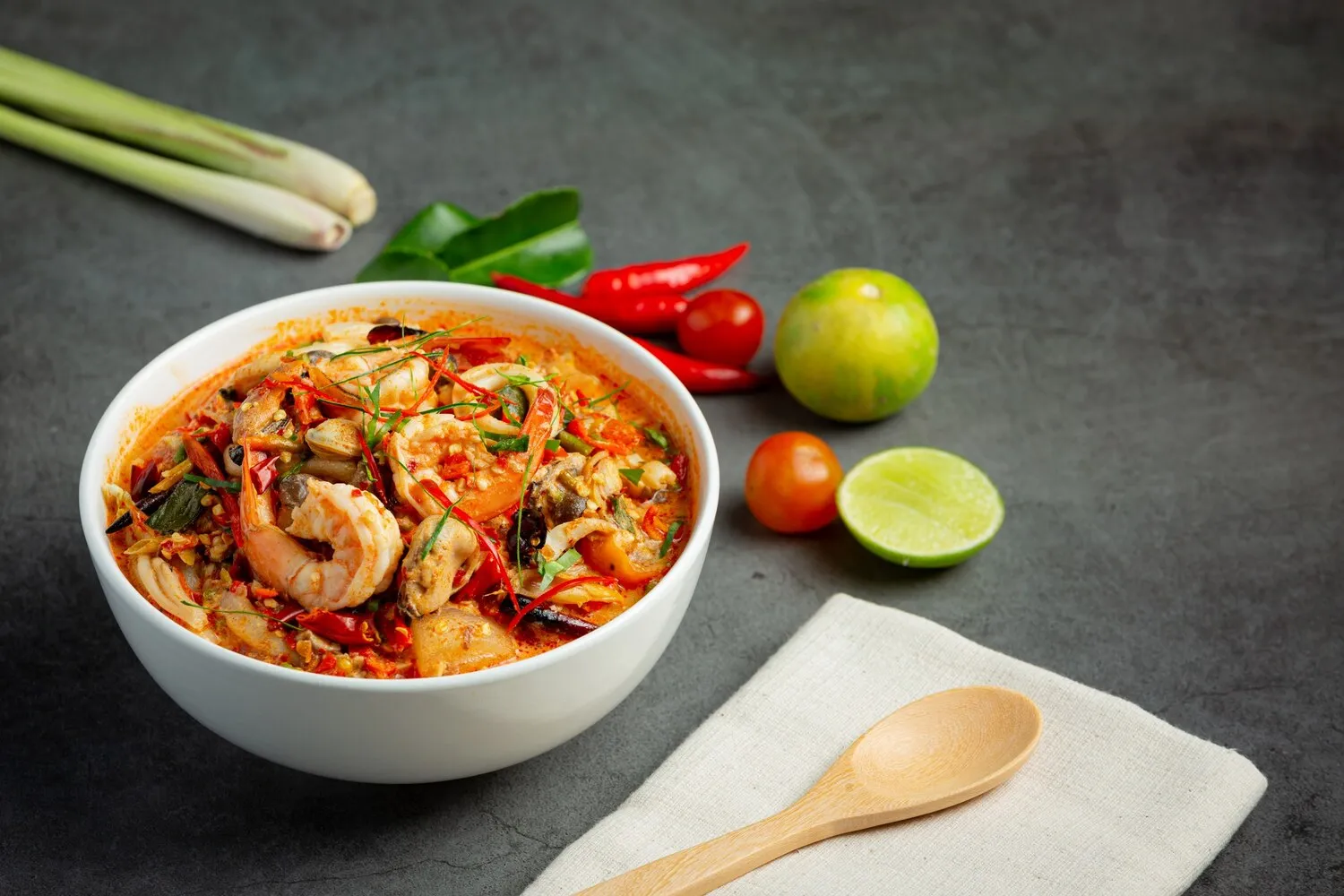
Sopa
Variety of soups.
Nutrition Facts
* The % Daily Value (DV) tells you how much a nutrient in a serving of food contributes to a daily diet. 2,000 calories a day is used for general nutrition advice.
A Padaria Portuguesa
Soup, in general, has a long history globally. In Spain and Latin America, sopa evolved from Roman and Moorish influences, incorporating local ingredients and culinary traditions. The availability of diverse vegetables, meats, and spices contributed to the regional variations we see today. Different regions developed their unique sopas based on available ingredients and traditional cooking methods, reflecting the local terroir and cultural heritage.
Sopa holds a significant place in Spanish and Latin American culture, often representing comfort, family, and tradition. It's a staple dish, frequently served as a starter or light meal, and is often associated with home cooking and warmth. Different varieties of sopa are often prepared for special occasions and holidays.
Family Gatherings
Sopa is frequently prepared and shared during family gatherings, especially during colder months. It’s a dish that brings people together and fosters a sense of community.
Traditional Medicine
In some cultures, sopa is considered a remedy for common colds and illnesses. Chicken sopa, in particular, is believed to have healing properties.
Regional Identity
Each region boasts its unique sopa recipes, reflecting local ingredients and culinary traditions. These regional variations contribute to the diverse culinary landscape and identity of Spain and Latin America.
The flavors of sopa are incredibly diverse, ranging from light and herbaceous to rich and savory, depending on the ingredients and preparation method. Common flavor profiles include chicken, vegetable, tomato, and seafood, often enhanced with spices like cumin, paprika, and cilantro.
The primary flavor profiles depend greatly on the variety. Chicken sopas often have a comforting, savory chicken broth base, enhanced with vegetables like carrots, celery, and potatoes. Vegetable sopas focus on the natural sweetness of vegetables, often blended or pureed for a smooth texture. Tomato-based sopas offer a tangy and slightly acidic flavor, balanced with herbs and spices. Seafood sopas capture the essence of the sea, with a delicate and briny taste. Common ingredients include garlic, onion, bell peppers, and various herbs like cilantro, parsley, and oregano. Paprika, cumin, and saffron are often used to add depth and warmth to the flavor.
Enhance the Broth
Use homemade broth for a richer and more flavorful base. Roasting bones and vegetables before making the broth will add depth and complexity.
Fresh Herbs
Add fresh herbs towards the end of cooking to preserve their flavor and aroma. Cilantro, parsley, and oregano are excellent choices.
Seasoning
Taste and adjust seasoning throughout the cooking process. Salt, pepper, and a touch of acidity (like lemon juice or vinegar) can significantly enhance the overall flavor.
Texture Contrast
Consider adding toasted bread or croutons for a contrasting texture. A dollop of sour cream or yogurt can also add richness and tanginess.
Explore additional Soup dishes and restaurants
Explore SoupDiscover top dining spots and culinary experiences in Almada.
Explore AlmadaLearn more about the food culture, restaurant scene, and culinary heritage of Portugal.
Explore Portugal